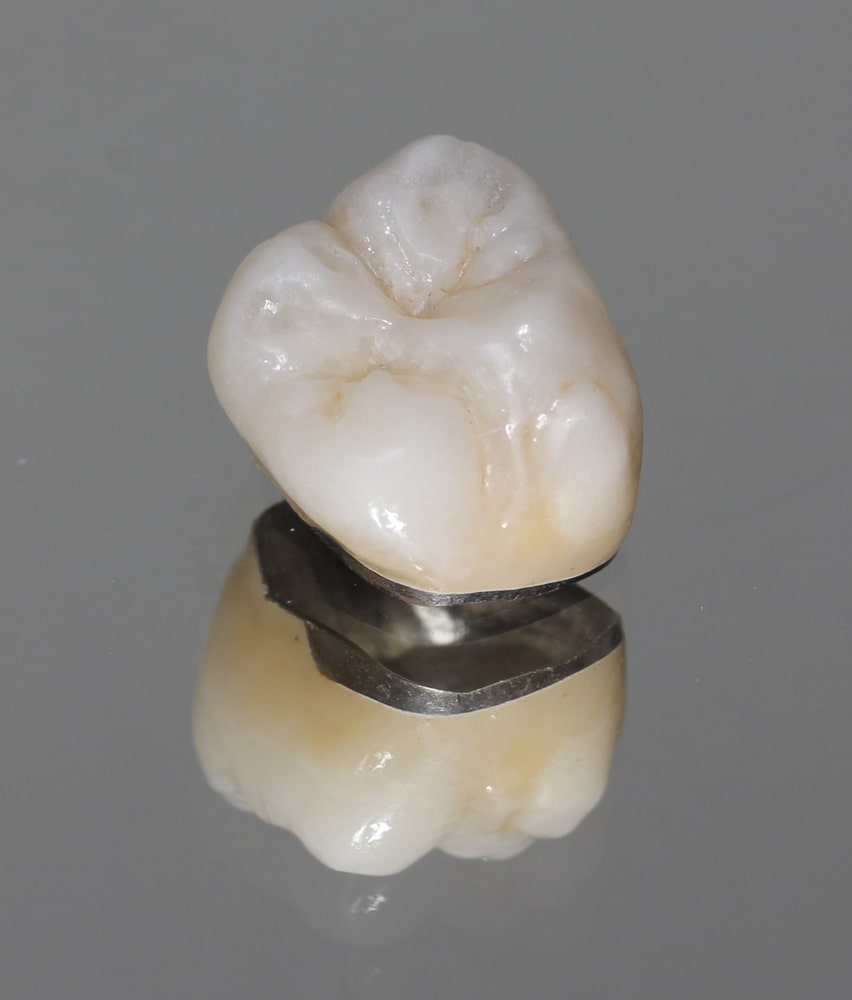If you are in need of a dental restoration, you may be wondering what type of restoration is best for you. There are many different types of dental restorations available, including porcelain fused to metal (PFM) restorations. In this blog post, we will discuss everything you need to know about PFM restorations! We will cover what they are, how they are placed, the benefits of PFM restorations, and how to care for them. Keep reading to learn more!
What are PFM restorations?
A PFM restoration is a dental restoration that is made up of two parts: porcelain and metal. The porcelain is fused to the metal, creating a strong and durable restoration that is also aesthetic and has a natural appearance. PFM restorations are often used for dental crowns and bridges. There are different types of metals that can be used for PFM restorations, such as titanium alloys, gold alloys, and base metal alloys (cobalt, nickel, chromium). Gold alloys tend to be the best metal for PFM restorations because they offer the most strength and do not cause metal allergies.
How are PFM restorations placed?
PFM restorations are typically placed in two visits. Depending on your individual preference, dental sedation can be used for one or both appointments. During the first visit, the dentist removes any decay from your teeth and prepares them for restoration. The dentist will also take impressions of your teeth and create a model of your mouth. This model will be sent to a dental lab and used to create your PFM restoration.
During the second visit, the dentist will place your PFM restoration. First, they will check to make sure that the restoration fits correctly. Then, they will cement the permanent restoration in place over the affected tooth or teeth.
The Benefits of PFM Restorations
There are many benefits of PFM restorations. Here are some of the most important ones:

Natural Appearance
PFM restorations look natural and blend in with your other teeth. This is because the porcelain coating can be customized in terms of color and translucency to match the surrounding teeth. The metal is also not visible and is concealed beneath the porcelain or gums.
Strong
PFM restorations are strong and durable, and can last for many years. Although porcelain is a strong material on its own, when combined with a metal base, this strengthens the entire restoration. Because of their immense strength, PFM restorations can safely be used towards the back of the mouth where the chewing forces are the greatest.
Stain-Resistant
They are resistant to staining and discoloration. This is because porcelain is naturally resistant to stains. However, it is important to note that the surrounding teeth can still stain, so it is essential to practice good oral hygiene to keep your restoration matching the surrounding teeth.
Long-Lasting
Finally, the strength of PFM restorations allows them to last for several years. While most PFM restorations last an average of 10-15 years, they can last up to 20 years if properly cared for. Check out our care tips below for more information.
How to Care for a PFM Restoration

Caring for a PFM restoration is similar to caring for your natural teeth. Be sure to brush and floss regularly, and visit your dentist for regular checkups and cleanings. This is important because it prevents plaque and bacteria from accumulating around the borders of your restoration. Good oral hygiene also keeps the surrounding teeth in good condition so that they can properly support the restoration.
It is also important to avoid damaging behaviors such as chewing on ice or pens, biting your nails, using your teeth as tools, or smoking. Despite their strength, partaking in these behaviors increases the risk of chipping or cracking your PFM restoration. When this happens, the restoration will need to be replaced to prevent further damage or decay from entering the tooth.
By caring for your restoration and avoiding damaging behaviors, you can keep your restoration in good condition for many years. If you have any questions or concerns about your PFM restoration, be sure to talk to your dentist.
In Conclusion
In this blog, we discussed everything you need to know about PFM restorations such as what they are, how to place them, the benefits of having one, and how to care for your new restoration. If you are in need of a dental restoration, be sure to talk to your dentist about whether a PFM restoration is right for you. Thanks for reading!
